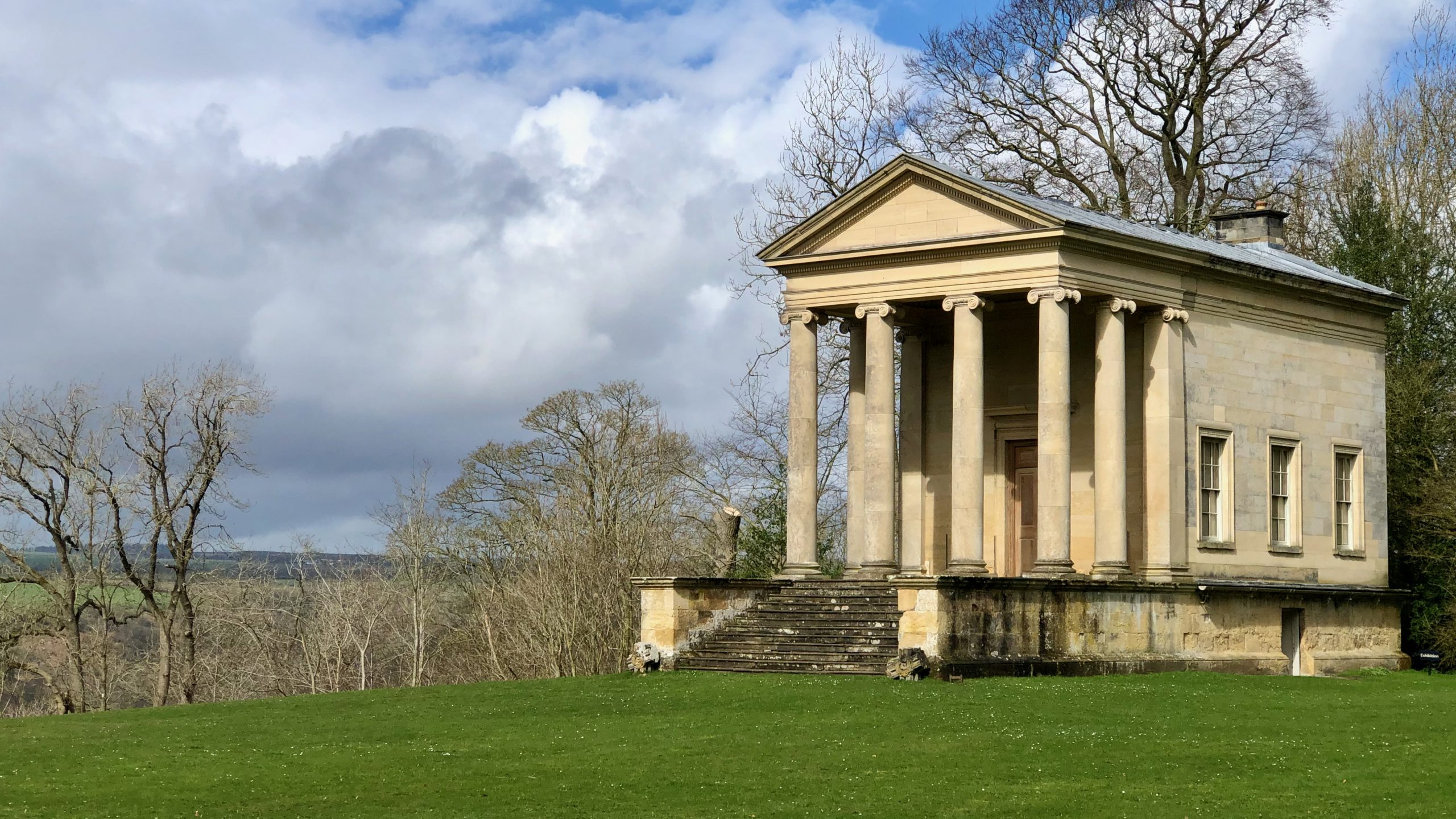They say that things often come in threes, and that certainly seems to be the case for me this week, as I have encountered the Duncombe family for the third time.
In 1687, a nouveau riche banker named Sir Charles Duncombe purchased the Rievaulx and Helmsley estates for the staggering sum of £90,000. He was known as one of the richest commoners in the country. When he passed away without any children in 1711, his nephew Thomas Duncombe I inherited the estates, and built Duncombe Park.
In 1749, his son, Thomas Duncombe II, married Lady Diana Howard, daughter of the Earl of Carlisle, who owned the nearby Castle Howard. Thomas conceived the idea of building a grand terrace that would overlook the beautiful ruins of Rievaulx Abbey after returning from his Grand Tour in 1747.
At the northern end of the terrace stands the Ionic Temple, which was inspired by the Temple of Portunus in Rome. The Duncombe family would use this temple for dining and socialising after promenading along the terrace. Apparently, the interior is stunning, with an intricately painted ceiling that would have been an impressive sight for any of the privileged guests. It is rarely open to the public.
In 1826, Thomas’s grandson Charles was granted the title of Baron Feversham of Duncombe Park. The nouveau riche had made the nobility.
In 1833, when the British Parliament finally abolished slavery in the Caribbean, Mauritius, and the Cape, one of the claimants for compensation payments was none other than Baron Feversham of Duncombe Park1‘Summary of Individual | Legacies of British Slavery’. 2023. Ucl.ac.uk <https://www.ucl.ac.uk/lbs/person/view/-258646517> [accessed 30 March 2023]. He claimed as an “equitable mortgagee” but was unsuccessful. This shows that he, along with banks and other institutions, was involved in financing the slave trade. It’s a sad reminder that this awful trade extended to all parts of society and the country and not just those that “owned” slaves.
Between 1797 and 1803, the ‘Windsor Castle’, a 316-ton ship built in Whitby and owned by a partnership of five men, made five voyages to the Caribbean, transporting over 1,700 enslaved people2‘Slave Voyages’. 2021. Slavevoyages.org <https://www.slavevoyages.org/> [accessed 30 March 2023]. This is just one example of the trade’s many “benefits”. Even the herring caught by fishermen and preserved by their wives who followed the herring along the North Sea coast provided “a staple of the planter’s breakfast”3Sanghera, Sathnam. “Empireland”. Page 141. Penguin Random House, 2021..
It is clear that there are few areas of Britain which have not benefited from this dark period of our history. Trickle-down economics to use the modern parlance.
- 1‘Summary of Individual | Legacies of British Slavery’. 2023. Ucl.ac.uk <https://www.ucl.ac.uk/lbs/person/view/-258646517> [accessed 30 March 2023]
- 2‘Slave Voyages’. 2021. Slavevoyages.org <https://www.slavevoyages.org/> [accessed 30 March 2023]
- 3Sanghera, Sathnam. “Empireland”. Page 141. Penguin Random House, 2021.

Leave a Reply